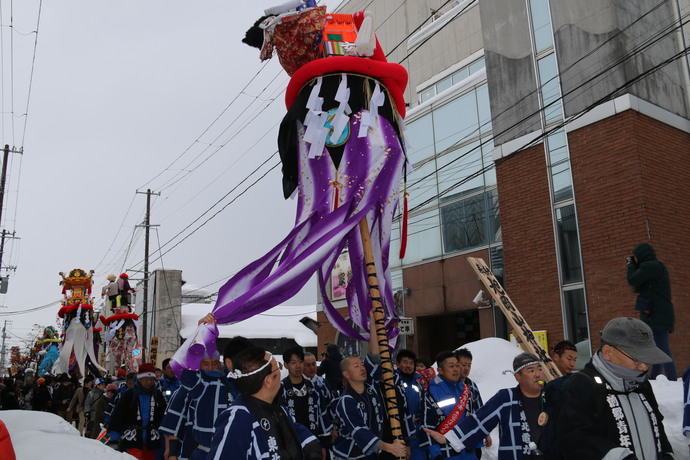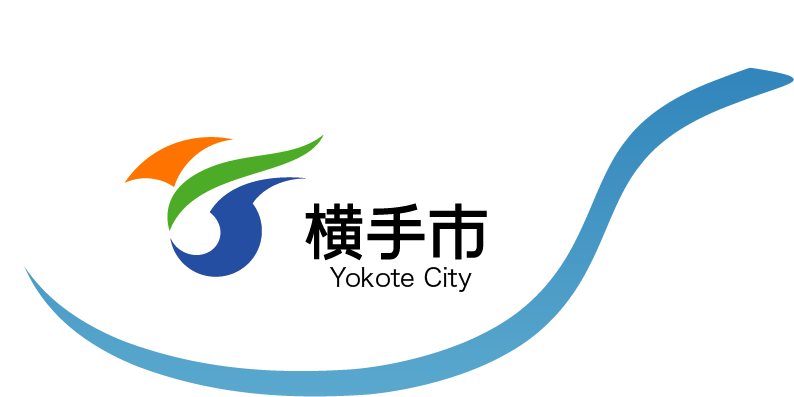History and Origin of Bonden
History and Origin of Bonden
Bonden are ritual objects that have been made and displayed in Yokote for over 300
years. Bonden are deeply rooted in Shinto belief and are used to house the spirits of
kami when they descend to earth. Typically, bonden consist of wooden staves
approximately 4 meters in length decorated with paper streamers and other
ornamentation.
Bonden as Shinto Ritual Objects
According to historical documents, bonden originated as religious objects called
heisoku, wooden wands that are used in Shinto rituals. Heisoku were also referred to as
bode, and practitioners of Shugendō, a form of mountain asceticism that is rooted in
Shinto, combined the term bode with the name of their guardian deity Daibontenō to
create the word bonden.
Modern bonden are much more elaborately decorated than the heisoku from which they
originated. The tradition of offering them at Asahiokayama-jinja Shrine is believed to
have begun in 1845, from a great hunt held on the sixteenth day of the new year by
Tomura Jūdayū VIII (1818–1880), the keeper of Yokote Castle. The hunting party
included many men from the local fire brigade, and while returning to the castle, they
stopped at Asahiokayama-jinja Shrine to pray for safety from fires. The firemen had
brought along their large firemen’s standards, known as matoi, which were used to rally
firemen to the source of a fire. Matoi are essentially long poles with paper streamers,
and they strongly resemble large heisoku. During their prayer, the firefighters raised
their matoi before the shrine’s gates. According to local lore, the size and shape of the
unusually large bonden used in Yokote’s Winter Festival were directly influenced by the
firemen’s standards used during that hunting trip over 150 years ago, and a bonden
competition is held each year on the same day as the great hunt.
Bonden in the Winter Festival
The bonden displayed during the Winter Festival competition come in a variety of
designs, each of which is created by the individual neighborhood or company it
represents. Some groups follow traditional designs, with elements such as pagodas,
altars, or the zodiac animal of the year, while other groups incorporate modern design
motifs such as sports mascots. Regardless of the motif, participants seeking to have their
bonden displayed must follow strict specifications regarding its shape, dimensions, and
composition.
First, the bonden’s pole must be a total of 4 meters long. On top of the pole, there is a
bamboo basket 90 centimeters across, from which hang 270-centimeter strips of cloth
called sagari. Next are the shide, paper streamers used on the heisoku wands, and the
hachimaki (literally, “headband”) that wraps around the basket. The elaborate
decorations added to the top of the bonden, known as the atamakazari, must have a base
of 120 centimeters or smaller, and its height should not exceed 150 centimeters. At the
turn of the nineteenth century, most decorations were made of bamboo, wire, and cloth,
but modern decorations can include lightweight materials like Styrofoam, which has led
to even more elaborate designs.

This English-language text was created by the Japan Tourism Agency.
このページに関するお問い合わせ
商工観光部観光おもてなし課観光企画係
〒013-8601 横手市中央町8番12号(かまくら館5階)
電話:0182-32-2118 ファクス:0182-36-0088
お問い合わせフォームは専用フォームをご利用ください。



